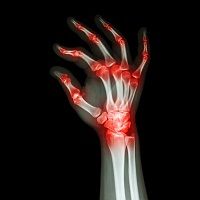Article
Fighting Gout Pain Via Potassium Channels Proved Successful
Author(s):
Patients with gout may find relief from severe inflammatory pain due to recently explored peripheral system channels.

Patients with gout may find relief from severe inflammatory pain due to recently explored peripheral system channels.
First author Yueming Zheng, PhD candidate, and his colleagues from the Shanghai Institute of Materia Medica in China identified the KCNQ potassium channels as being key in promoting analgesic effects. The team examined benzbromarone (BBR), a uricosuric agent and non-competitive inhibitor of urate transporters, since it is commonly prescribed to patients with gout.
“Our data indicate that activation of peripheral KCNQ channels mediates the pain relief effects of BBR, potentially providing a new strategy for the development of more effective therapies for gout,” the authors wrote in PAIN.
Inflammatory pain-induced mouse models were used to uncover the effect BBR had on pain activity. The study consisted of 2 phases with the first 10 minutes showing nociceptive pain and the next 11 to 60 involving inflammation.
“We administered i.p. BBR, and the 2 alternative first-line treatment drugs, ALO and PRB, all at 50 mg/kg body weight individually 30 minutes before intraplantar injection of formalin,” the report informed.
Neither ALO or PRB did not greatly impact pain behaviors, however, BBR did during both phases. BBR has proven to be highly effective and the researchers discovered that it also activates KCNQ potassium channels. By doing so, BBR suppresses the neuronal overexcitability from inflammation.
Unlike other medication often prescribed for pain control that do not protect against the pathological damages of gout — such as nonsteroidal anti-inflammatory drugs, colchicines, and corticosteroids – adverse effects associated with BBR have been limited over the years.
“Although the expression or function KCNQ channels in joint tissue is rarely investigated, the data above suggest that BBR’s activation of peripheral KCNQ channels contributes to its pain relief activity,” the investigators explained.
The team is hopeful that their findings provide the first actual evidence that the voltage sensing domain (VSD) of the KCNQ potassium channels is accessible.
“The activation of KCNQ channels alone or in combination with other treatments may provide an alternative choice for patients suffering acute attacks or recurrent flare-ups of gout who are less sensitive to or not tolerant of current medications,” the authors concluded.





